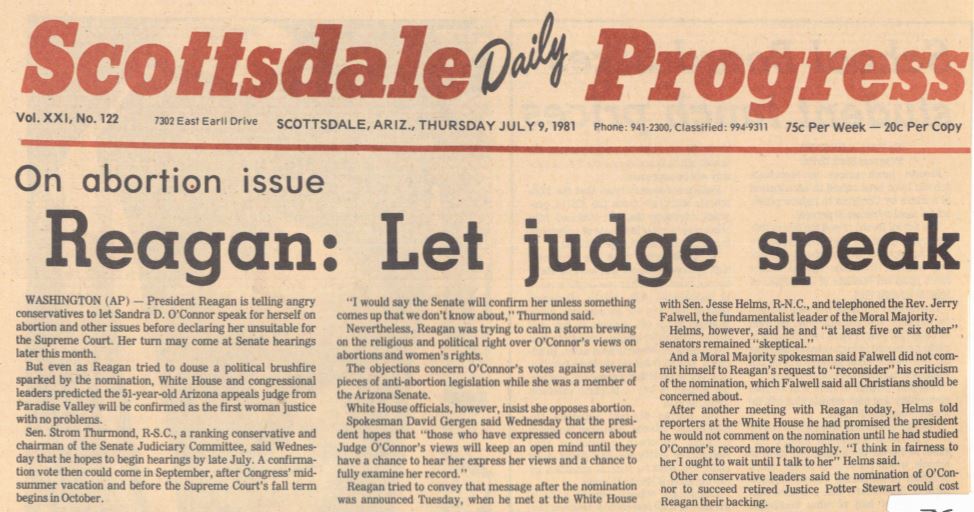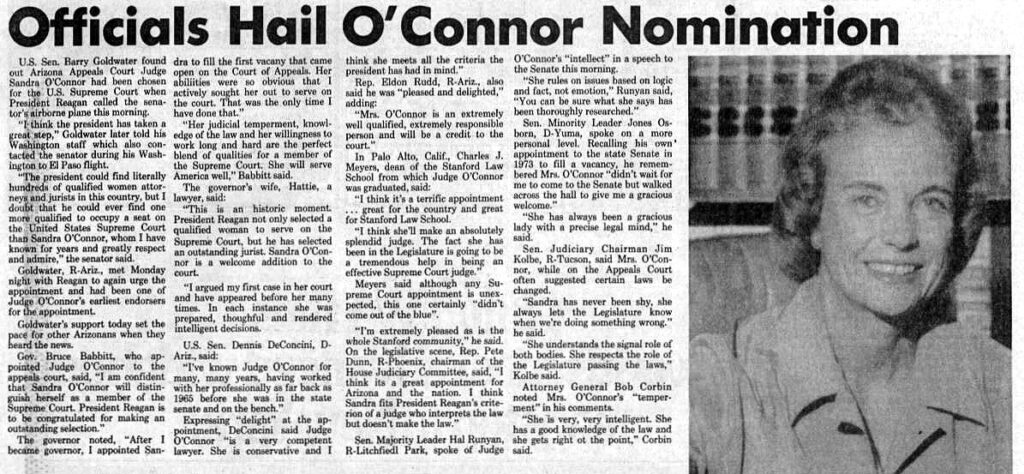Pardon me…’ Lawyer interrupts O’Connor
WASHINGTON (AP) – Sandra Day O’Connor, in her public debut as a working Supreme Court Justice, wasted little time Monday in asking her first question from the high court bench. “Mr. Silard, may I ask a question?” the court’s first woman member said at 10:46 a.m., a little more than one-half hour into the first oral argument of the new term. John Silard, arguing a complex offshore oil and natural gas leasing case on behalf of the Energy Adion Educational Foundation, shot back: “Just a minute, your honor.” Silard, who also had asked several other justices to hold up on questions while he finished a point, went on to complete his answer to a previous question ltom the bench. Then he beckoned to Justice O’Connor, who said “It isn’t .clear, is it, that even if California wins here, that the secretary (of the Interior) would use the bidding system California prefers. The secretary would still be free to use other experiments.” Her query referred to California’a bid in the case to obtain an offshore oil and natural gas leasing system that would yield greater revenue for the state. Silard, Waving his finger in the air at Mrs. O’Connor to make his points, then elaborated at length on the various leasing systems available Without specifically agreeing or disagreeing with Mrs. O’Connor’s line of reasoning.
After several questions from other justices, Silard wound up his argument by looking directly at Justice O’Connor and saying he hoped the court’s decision would grant “a new life to


